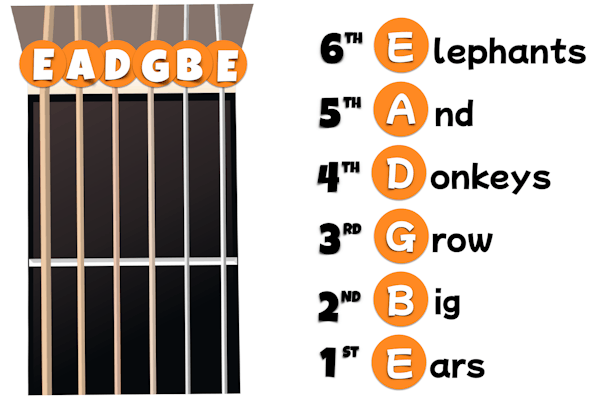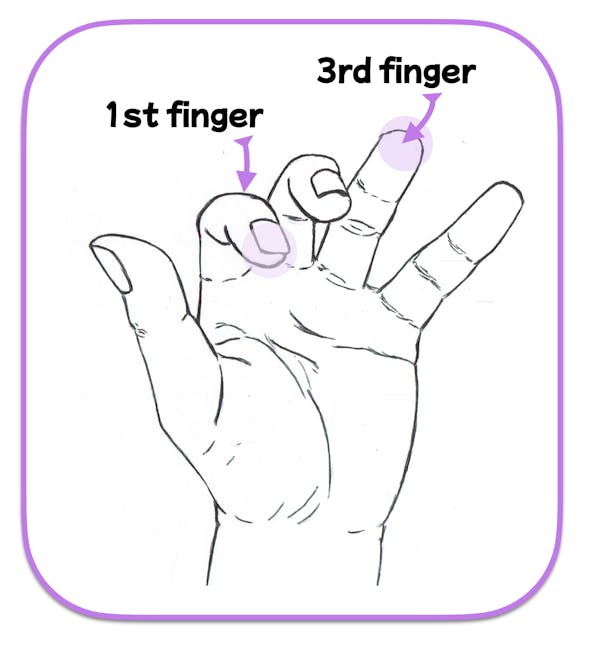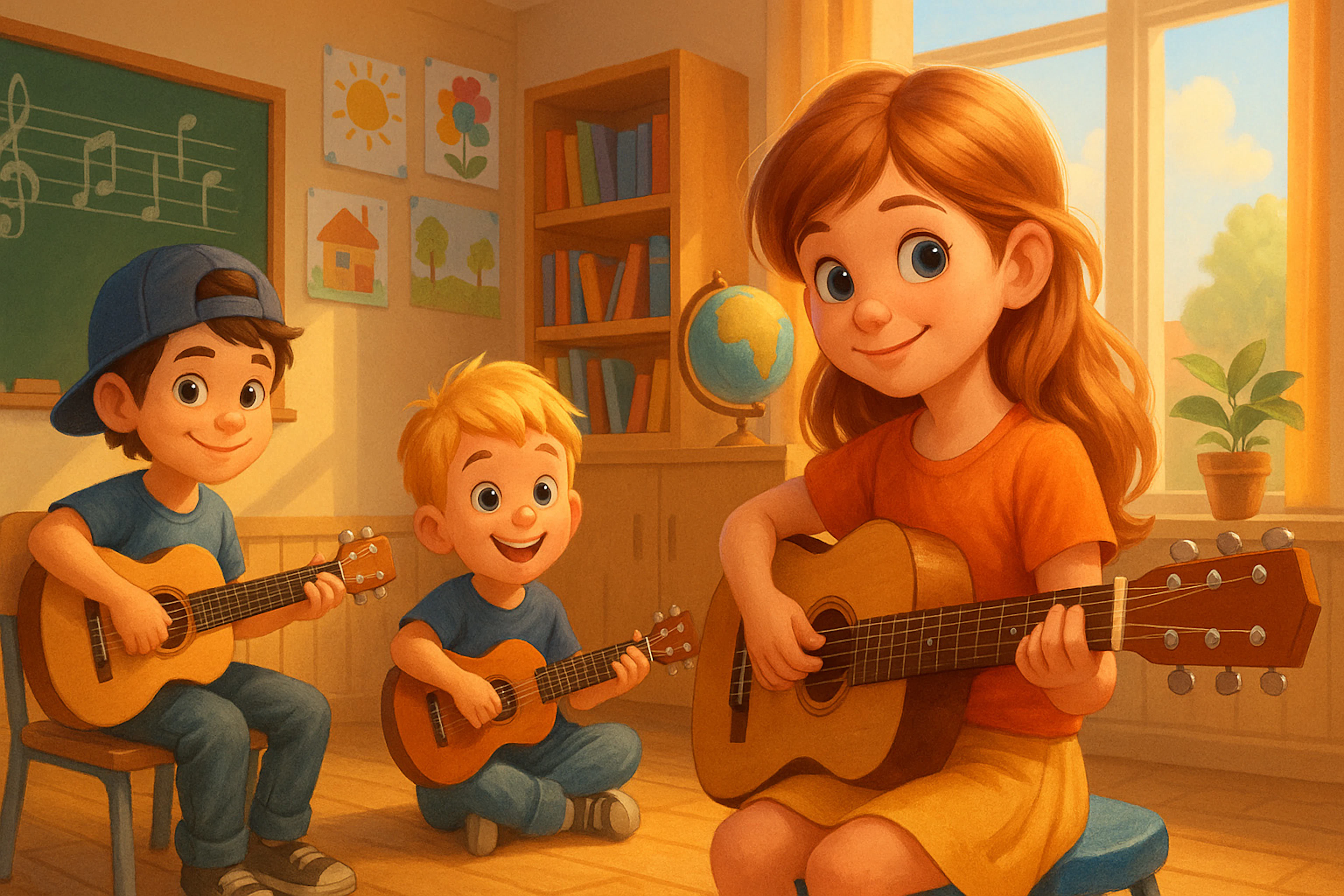Your Amazing Guitar Adventure Begins: First Steps to Becoming a Guitar Star
Starting your guitar adventure is super exciting! Today we're going to learn everything you need to know for your first guitar lesson. Whether you're 5 or 12 years old, these easy steps will help you begin making music.

What You'll Need
- An appropriately sized guitar
- A comfortable chair
- A guitar pick
- A quiet space to practice

Getting to Know Your Guitar
Your guitar is like a new friend! Let's meet all its parts:
The Headstock
- Where you'll find the tuning pegs
- Think of these as your guitar's "ears"
The Neck
- Contains frets and strings
- Like a road map for your fingers
The Body
- The big part where the sound comes from
- Has the sound hole (acoustic) or pickups (electric)

Check out this guide here : How To Choose The Right Sized Guitar
Holding Your Guitar
Step 1: Sitting Position
- Sit up straight in your chair
- Rest the guitar on your right leg (if right-handed)
- Keep your shoulders relaxed

Step 2: Hand Positions
Lets look at the best ways to position your Right and Left Hand;
The Secret Thumb Trick
- Place your thumb behind the guitar neck like a kickstand
- Keep it between your first and second finger
- Don't let it peek over the top of the neck!

Magic Finger Position
- Keep your fingertips curled, like little hammers
- Touch the strings with just the tips of your fingers
- Leave space between each finger - they need room to dance!
LEFT HAND POSITIONING
Check out the diagram below, this is an overhead shot looking down at your guitar. The 3rd finger is pressing down on the 1st E string or the skinniest string. The thumb is positioned in the middle of the neck so that your fingers can curl over like a cats claw. This makes it easier to for your fingertips to press down onto the strings

The Wrist Rule
- Keep your wrist straight like a ruler
- Don't let it bend like a banana
- Your hand should feel relaxed and happy
Oops! Watch Out For:
- Don't squeeze too hard - the guitar doesn't like that!
- Keep your fingers curved like a cats claw
- Don't let your thumb play hide-and-seek over the neck
Quick Check:
✓ Can you wiggle your thumb behind the neck?
✓ Are your fingers curved like little rainbows?
✓ Does your wrist feel comfortable?
✓ Can you tap each string without moving your whole hand?
Remember: If your hand feels tight or sore, take a little break and shake it out! Playing guitar should feel like fun, not work.
RIGHT HAND POSITIONING

- Don't squeeze the pick to hard - just enough pressure so you won't drop it
- Rest your other fingers on the body of the guitar to keep the pick steady.
Your First Notes
Let's play some simple notes on the first string (the thinnest one):
1. Place your first finger on the first fret
2. Pluck the string with your right hand
3. Try moving to the second and third frets
Fun Practice Activities
The String Name Game
- Learn the string names: E A D G B E
Use this fun sentence where the first letter of each word helps you memorise the string names: Elephants And Donkeys Grow Big Ears

Using Fingers Of The Left Hand
Most guitarists use fingers 1 to 4 with the pinky being the weakest. Fingers 1,2 and 3 are the stronger fingers making it easier to apply pressure to the strings. When you're starting out you will naturally want to use your 1st finger for everything. However it's best to use all 3 where possible, especially when you get to playing chords. Chords require at least 3 strings to be played at once.

- Number your fingers 1-2-3-4
- Stay up on the tips of your fingers by curling them over
- Use the very tips of your fingers
Progress Checkpoints
✓ Can you name all parts of the guitar?
✓ Are you sitting with good posture?
✓ Can you hold the pick correctly?
✓ Can you play a clear note on the first string?
Practice Plan
Week 1 Goals:
- Practice 10-15 minutes daily
- Master the proper sitting position
- Learn to pluck individual strings
Tips for Success
- Start with short practice sessions
- Always use correct posture
- Have fun with each exercise
- Celebrate small victories
Next Steps
Once you're comfortable with these basics, you'll be ready for:
- Learning your first chord
- Playing simple melodies
- Understanding rhythm basics
Parent's Corner
Supporting Your Young Guitarist:
- Help establish a regular practice routine
- Ensure proper guitar size and setup
Celebrate progress, no matter how small
Remember: Every guitar hero started exactly where you are now. Take your time, be patient, and most importantly, have fun!



